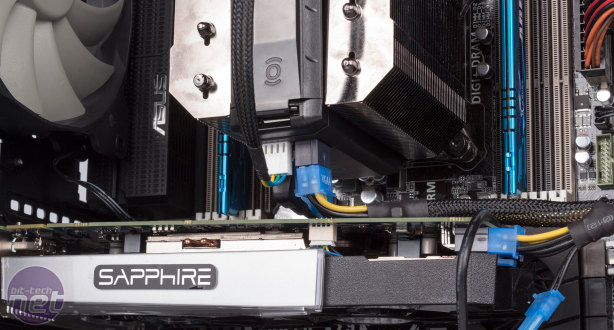
Performance Analysis
The LGA1150 system was the only system where switching from Standard to Insane in the software made a difference. In Standard mode, the cooler was only able to achieve a delta T of 51°C; still not a bad result, but its fan is fast at full speed (over 2,500 RPM) which makes it somewhat noisy, although not obnoxiously so. Switching to PWM to try to calm things down didn't make a difference – our motherboard's PWM profile was such that it pushed the fan to nearly full speed anyway and the delta T was the same. Insane mode, however, saw the TEM kick in sooner and keep the result 6°C lower. PWM mode allowed the cooler to maintain this at a slightly lower fan speed of around 2,300 RPM, which was still clearly audible. This is a strong result for an air cooler, although the same height (but considerably deeper) Alpenföhn Atlas is only 2°C warmer, while larger coolers are both cooler and quieter.With the LGA2011 and AMD systems, we saw the same result with both profiles and only the fan speed changed things. For the former, the best, full-speed result was a delta T of 54°C, which was only able to match the Alpenföhn cooler, and this dropped to 57°C using a PWM profile where the fan hovered around 2,000 RPM – definitely more tolerable. It was a similar story on AMD – an Alpenföhn-matching result at full speed and a 3°C increase with PWM activated with a fan speed of about 1,900 RPM.
Conclusion
Frankly speaking, the Hex 2.0 is a tough cooler to recommend for most people, primarily because the cost is so high relative to the performance it offers in most situations. If you're not space-limited, even a super high-end air-cooler like the Noctua NH-D15 costs considerably less, and you'll get temperatures and noise levels that are both lower. Further, even if you are space-limited, the Hex 2.0 doesn't appear to have much to offer performance wise over similarly sized competitors like the Alpenföhn Atlas, which again is far less expensive.The Hex 2.0 is very compact, well-built and a decent performer for its size, and we always enjoy seeing companies try something a little different (TEM coolers aren't new, but they're certainly not the norm). However, the advanced technology like the TEM and software control add considerably to the price but, unfortunately, little in terms of practical benefits.

MSI MPG Velox 100R Chassis Review
October 14 2021 | 15:04










Want to comment? Please log in.